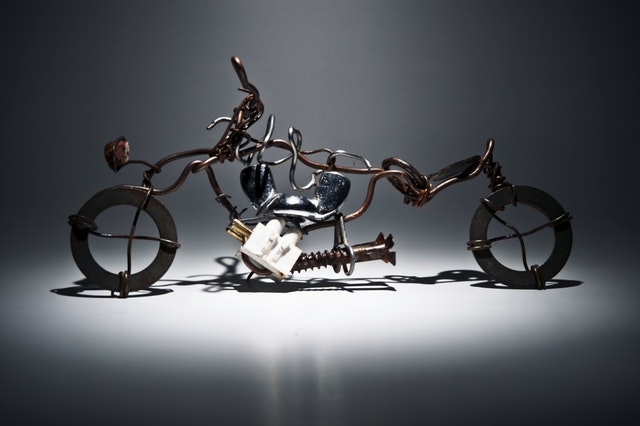An ancient art type, wirework was initially practiced by the Egyptians around 3,000 BC. From the mid-nineteenth century that this vibrant folk art thrived with the impressive selection of merchandise from kitchen areas to cable fencing. From the 1920’s, wire sculpture introduced this type to the world of art with advancements in 3d wire forming to create a more immersive art style.
Fundamental Techniques
Wire is a remarkably malleable material. It may be braided, coiled, twisted, wrapped, corded, woven, crocheted, spiraled, filigreed and fashioned to innumerable great shapes.
Twisting wire
Twisting at least two cables together adds strength and also generates feel. Soft wires like copper would be the simplest to twist. Harder wires like galvanized wire need more effort and upkeep. Letting go of these cables prematurely may make them spin dangerously out of control.
The simplest way of twisting cable is using a hand drill, a tool that would be very familiar with home extension builders, giving you more control over the cord. Begin with a sheet of cable at least three times as long as the desired twisted span, keeping in mind the tighter the twist, the longer wire you are going to want. Fold the wire in half and wrap it around a table leg or doorknob. If needed, put some padding between the cable and the doorknob or table to protect the surface. Put a cup hook at the drill and fasten the two cable ends into the cup hook. While holding the cable tight, gradually turn the drill twisting the cable slowly.
If you do not have a hand drill, then you may make your own modified version using a wooden coat hanger which has a revolving cable hook. Cut a piece of wire at least three times provided the desired twisted span. Fold the amount of cable in half and fold it on a door handle or other secure stage. Wrap both cable ends at three times round the hanger, on each side of the grip, to fasten. Measure back until the cable is tight and start rotating the coat hanger. For an even spin, hold the cable and do not loosen your grip. Twist the cable to the desired level, taking care to not over spin or the cable may snap. Remove the cable in the door or drill handle and cut ends.

Fundamental anchor loop
Most cable craft designs begin with a fundamental anchor loop. Grab the end of the cable with round-nose pliers, about 1/4″ down from the end of their nose, maintaining a firm grip on the pliers’ handles. Produce a tight loop by carefully twisting the cable across the nose of the pliers by turning the pliers or by pulling the cable around. Eliminate the loop in the nose of the pliers, and set the looped end between the ends of the pliers, then squeezing to flatten out the finish.
Wrap cable
When wrap wire, the center cable should be thicker and more difficult than the wrap wire. Two bits of the exact same thickness may be utilized, if the wrap wire is soft, aluminum cable is best. When cutting the center cable, leave an additional 2-1/2″ to shape the twisting loop. If you’re using long lengths of cable, you might want to coil them so that they won’t become uncontrollable.
Employing round-nose pliers, create a loop in the end of the core wire and attach the wrap cable to the loop. Add a pencil or chopstick to the loop and use it like a winder by rotating it using a single hand. While twisting, use the flip side to twist and scrunch the cable coils so the cable is tightly wrapped. You might even use horizontal chain-nose pliers, taking care to not harm the colour coating.
Coils
Coils, a generally employed cosmetic shape, add elegance and style to a home extension, while eliminating the danger of sharp endings.
Closed Coils: utilizing round-nose pliers, create a little loop in the end of the wire. Hold the loop securely with parallel or channel-type pliers, and keep to bend the cord around itself until you’ve got a coil of their desirable size. Keep correcting the position of the pliers as you work, taking care not to mar the cable.
Open Coils: utilizing round-nosed pliers, create a little loop in the end of the wire. Holding the loop at the pliers, then put your thumb against the cable and form a curve, eyeballing the distance you need between the rings of this coil. Ultimately, carefully sew the coil using parallel (channel-type) pliers.
Flattened Extended Coils: The flattened extended coil is a fast and effortless way to make decorative trim on some wire furniture or a structural apparatus like the side walls of a container.
Wrap the wire many times around a broomstick or dowel to create a coil. Remove the cable from the broomstick once the coils reach the desired span. Splay out or sew the loops by one by holding them securely between your palms and thumbs, or simply by squeezing a little pair of pliers with nylon jaw pliers. Maintain splaying squeezing or out the loops before the entire coil was flattened. The loops will seem more oblong than round. You are able to extend the coil farther to start the loops if wanted.

